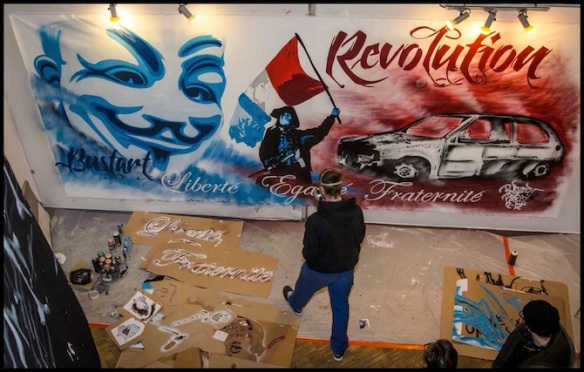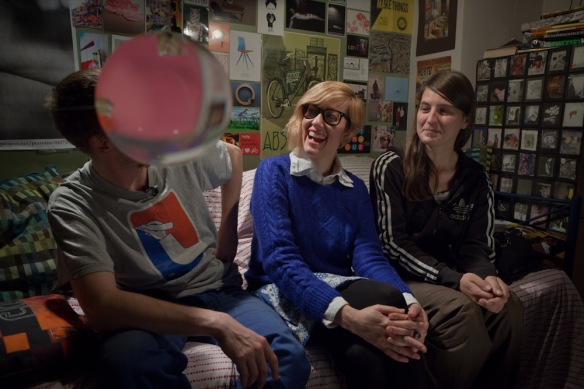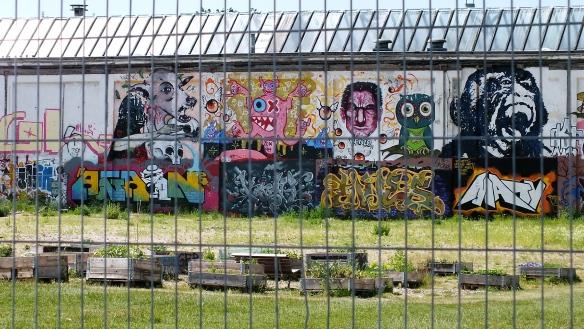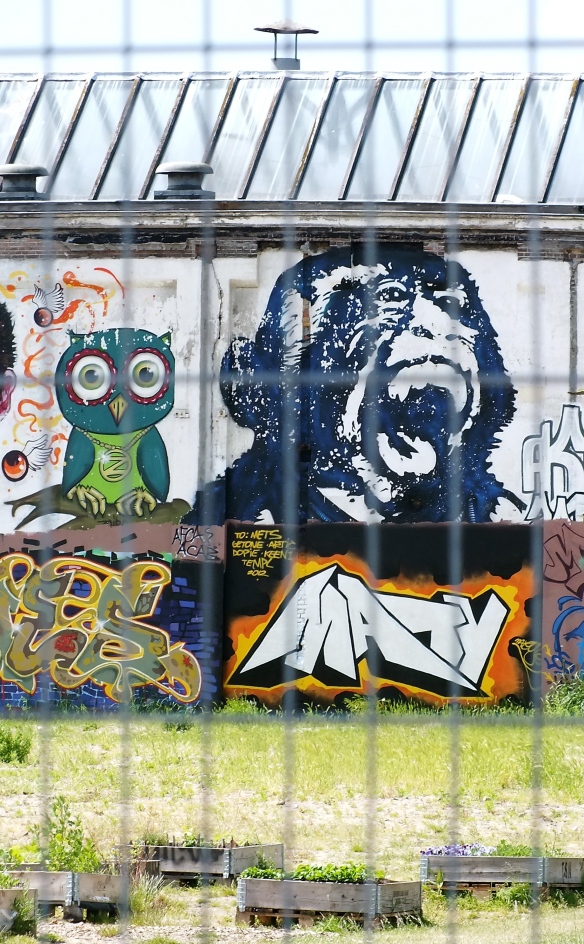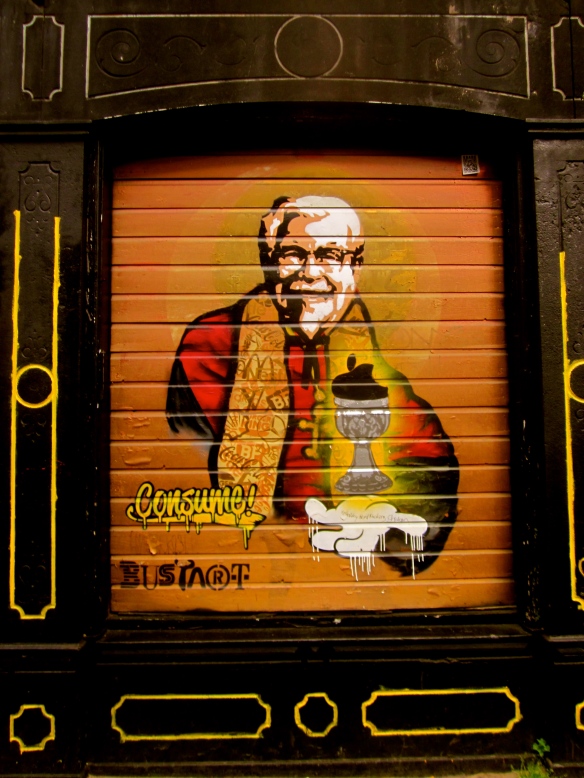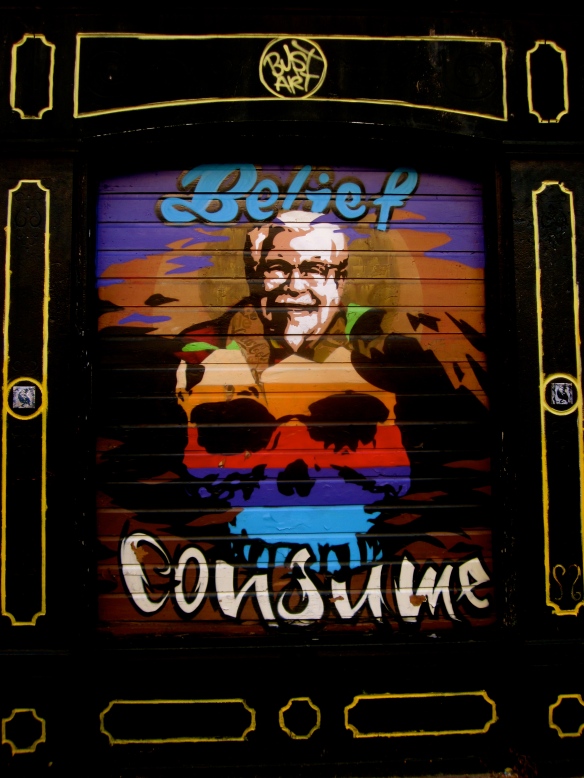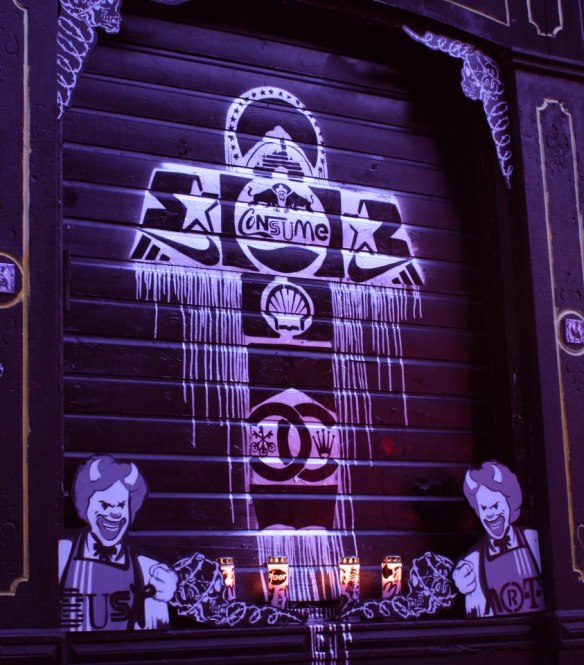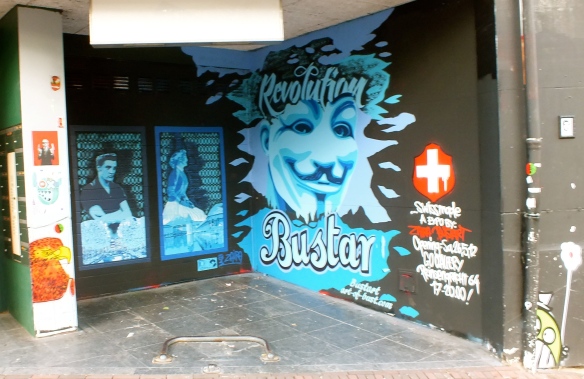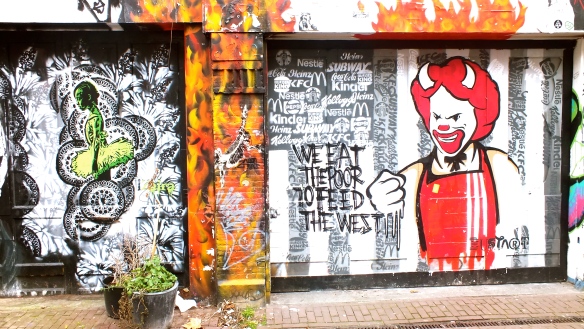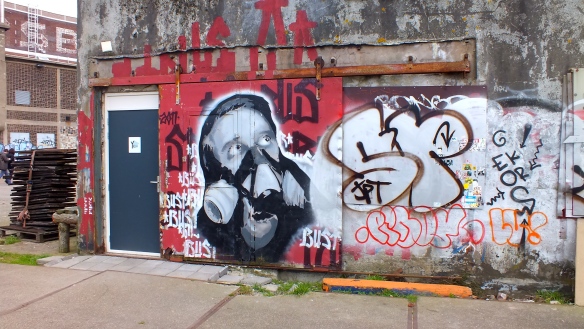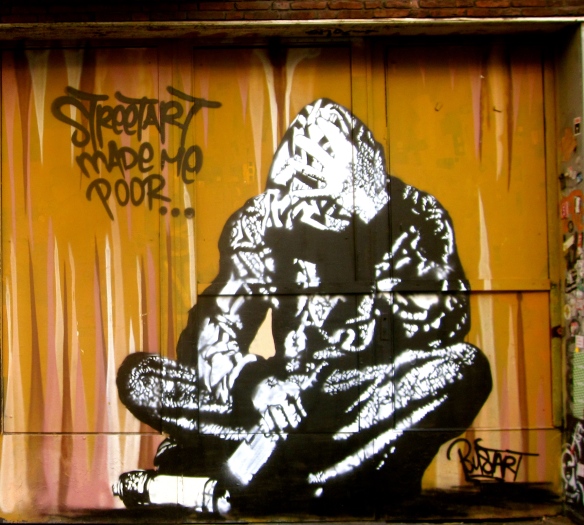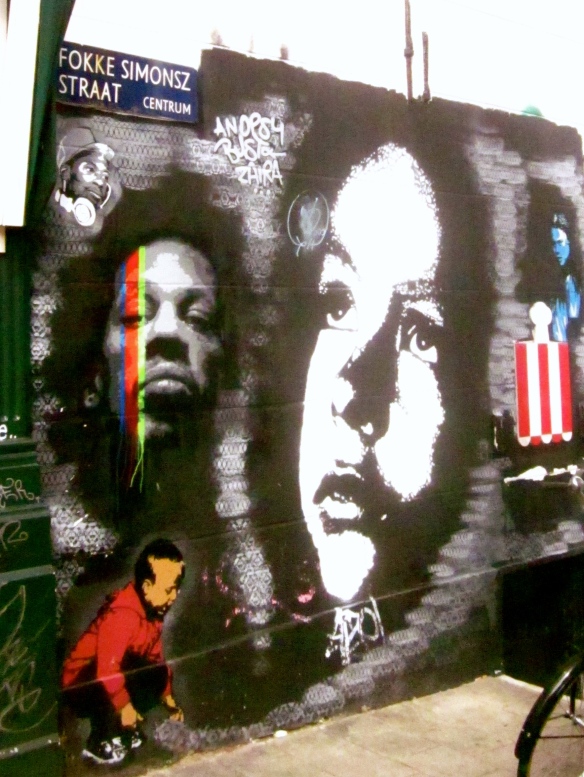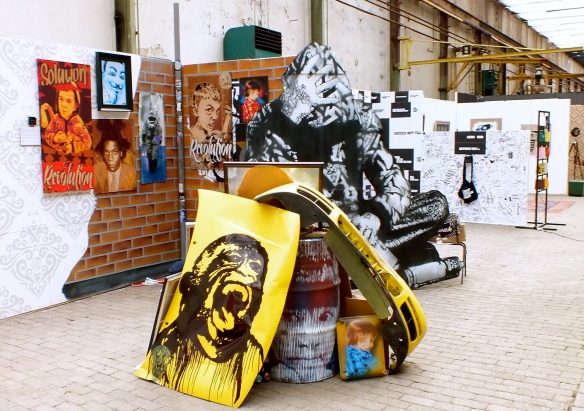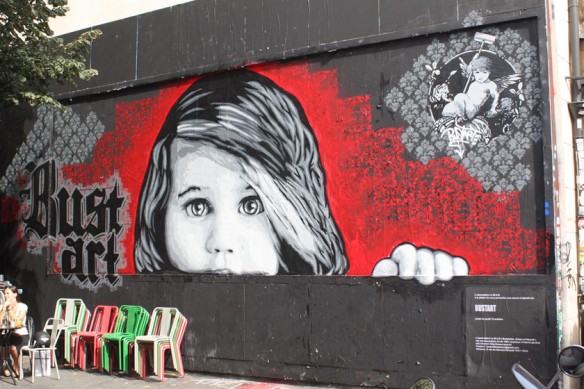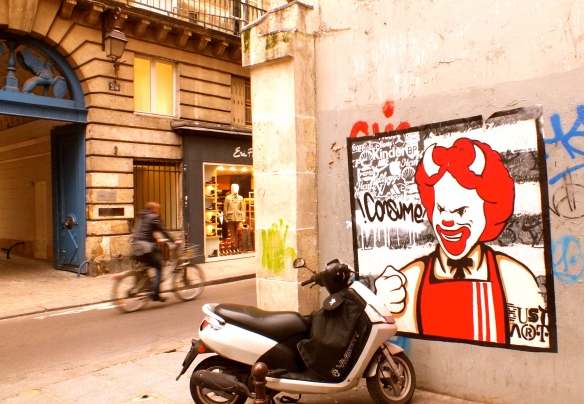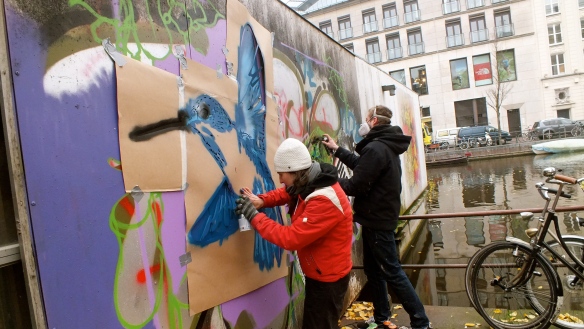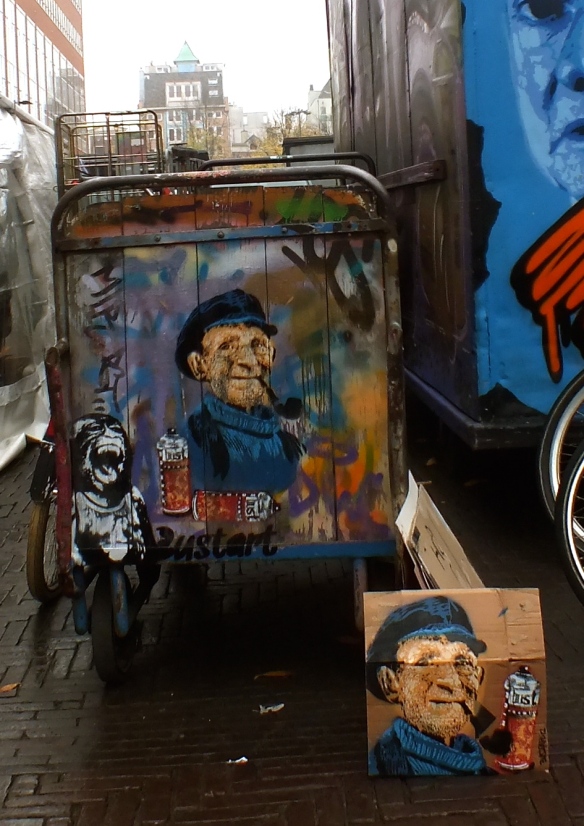It’s Monday night and I’m going to meet the charismatic Brazilian artist and urban architect Rafael Suriani in front of Cirque D’hiver, at Rue Amelot in Paris. A place that he suggested to meet me when I asked to interview him close to some of his recent works.
In a traditional Parisian cafe on the beginning of Rue Oberkampf we had an enjoyful conversation for almost 2 hours and after that, we walked around and I had the pleasure to see personally, Suriani’s 4 latest works on street accompanied by him.
Based in Paris since 2007, I first met Suriani on the vernissage of a collective exhibition at Le Cabinet d’Amateur in the end of May. On that moment he was exhibiting his canvas beside the artists Fred Le Chevalier, Diamant, Rubbish Cube and others. Naturally I felt interested to decode the work of a fellow countryman from Sao Paulo. Our connection, which is not just about coming from the same country, speaking the same language and working with street art, is also about sensibility for the same subject, a coincident story that I will tell you later on in this article about the fashion industry, the Bolivian workers and the Braz neighborhood in Sao Paulo, that in 2006 both of us, Suriani and I were involved in different ways.

Rafael Suriani
Suriani knew that he wanted to be an artist since he was a child. He studied architecture because was a way to have a career and also the possibility to draw a lot. His first work on the streets was in 2002, time when the first generation of past-up emerged in the city of Sao Paulo.“In the middle of the architecture course I started a search of urban art, public art, monuments and sculptures in the city of Sao Paulo. In that time it was also the boom of muralist graffiti, the explosion of artists like Os Gemeos, Nunca and Zezao, because I already liked the graffiti movement I was inspired and I started to past-up in 2002 and never stopped since then”, he says.

Suriani’s most recent work in Paris

Suriani’s most recent work in Paris

Suriani’s most recent work in Paris

Suriani’s most recent work in Paris
His thesis for the architectural university was a series of past up about Bolivian population working on the fashion industry in the Braz neighborhood, Sao Paulo. Is in this exact point of his work that Suriani and I got connected with our past. I used to work with fashion for a long time and I use to buy clothes to supply my store on this same place. One day I heard about the reality of the conditions of Bolivians that use to work for those companies, almost as slaves, working in inhumane conditions to generate more profit for the owners of the business and also to achieve competitive prices for people like me, that were buying from them and collaborating for this unjust system. When I realize this sad situation, it was the same year that Suriani was “protesting” with his art work. “I contacted the Bolivian people that use to work in this conditions and inspired me in their culture to create this series. I took the millenary weaving of fabrics that they have and contrasted with the not poetic conditions that they came to work in the fashion industry in Sao Paulo, I inserted the image of a Lhama in the context that this people are living and had been suffering. Once one Bolivian man that saw this image on the wall in Sao Paulo came to me crying and moved with the memories he had of this animal in his childhood. I created a social visualization for a specific group using the image of an animal, a metaphor.”, he explained me.

Suriani’s work in Sao Paulo

Suriani’s work in Sao Paulo
Suriani takes his inspiration from the urban life, urban culture, skateboarding, night life, street fashion, mythology from different continents, tales and everything that is related with young culture. “ It may seem incredible, but even using animals, my inspiration doesn’t come from nature but from the urban life. My characters are hybrids, which are very connected to the mythologies, the man/animal thing, this universe fascinates me”, Suriani says.
Animals were always present in his life: “ When I was a child I didn’t play with cars but with animal toys and I also use to have a dog, a fish, a turtle and a chicken that was devoured (laughs). Normally in my work I make series, I choose one animal and a state of spirit for him that can be funny, sensual, mysterious… That is also related with my spirit, with what I’m feeling in the moment. ”Even with the presence of animals in his life, he says: “ Work with animals in my art is not a personal thing, but I am fascinated that animals are living beings like us, but we don’t understand them, we use to project ourselves in our pets, through our eyes we humanize animals.”

Suriani’s work in London

Suriani’s work in Paris
I asked Suriani what brought him to past up on the streets and he said:“ The necessity to participate without asking if I can, the desire to go out and intervene, change something on the environment. I like the idea that street art brings life for places without trying to sell anything. Someone that brings its own energy and live this energy for the city. In the point of view of the artist, we have the opportunity to be spontaneous, something that we lost in our society. An opportunity to show our work without following the rules of traditional portfolios. I also like the sociability with other people that is possible when you join in the urban life.”
In 2007 Suriani moved to Paris, while working on restaurant he discovered a scholarship for a master degree at Université Paris VII Vincennes-St Denis with the theme: Urban art and collage, practice and theoretical, with the goal to investigate in what artists do on the streets with spontaneity. He searched about the theme “post-graffiti”: “There are not a lot theory studies about this subject. Graffiti was born more than 30 years ago and around 10 or 15 years the range of street art got expanded. Graffiti is an element of hip hop movement and post-graffiti are artistic interventions on the street that are not connected necessarily with hip hop. For example Os Gemeos use to make mural paintings with bomb spray and they are not always directly connected with the hip hop movement. Graffiti is the origin of street art and nowadays post-graffiti is more amplified for people that are connected with other movements or not.”, he said.

Suriani’s work in Paris
Living in Paris he already did a lot of projects. One of them is the French bulldogs series, he explain: “The French bulldog is a dog race originally from Paris which has a sulky face. They are intimately related to the Parisians. It’s not a social critic, I love Paris! But is a critic about the famous image of the Parisians who always complain and are never satisfied ”.

French bulldog series in Paris

French bulldog series in Paris
Cats also appear in Suriani’s work, “Cats are urban animals, specially here you can connect them with the famous roofs of Paris, they are free and not so submissive like the dogs. It’s not a ecological discourse but a way to talk about the urban man. Everyone can interpret the message of my work in different ways, I don’t want to say something specific, I believe that the work is strong when you have different interpretations, this is important for me”.

Street cats in Paris

Street cats in Paris
One issue that I was interested to know Suriani’s opinion, was about when street artists work above other street artist work, he sad: ”In Sao Paulo we call it “run over”, there is a lot of respect for the work of the colleagues. Here it is more usual to see an artist place their work on top of other works. In my opinion is unnecessary. There are so many walls, unless that the paste-up is really old or is ripped off.”
I asked him to compare the street art scene in Paris and in Sao Paulo: “Sao Paulo is a city always in construction because of the real-estate market which is considered ugly. Personally I like this aspect of demolition and construction. The graffiti scene and mural painting are really strong . We have a lot of worldwide successful artists like
Os Gemeos,
Zezao,
Kobra, etc… The city offers lot of walls and because it is considered ugly the reception for street art is very positive. On the other hand you don’t get so much visibility, because Sao Paulo has a lot of visual and sound pollution, a heavy atmosphere. In Paris the past-up technic is really strong as well as installations and mosaics like
Space Invaders,
Diamant and the collective
French Tricot. Paris is calmer than Sao Paulo, monochromatic, less visually polluted. People use to walk more, even tough the pieces stay on the walls less time they have more visibility.”
Suriani says

Suriani’s canvas
Observing Suriani series of work along those 10 years since he started, its clear the cohesion of an artist that mixes in perfect harmony theory studies and sharp concepts to create spontaneous and sophisticated work that he does on the streets and for galleries,
Suriani’s next show will be at Cabinet D’amateur on September 06 in Paris. He also will have a show in London at Islington Arts Center and he was invited to exhibit in Florianopolis, Brazil, let’s cross the fingers to see the work of this talented street-artist running the world! Congratulations Suriani!!
